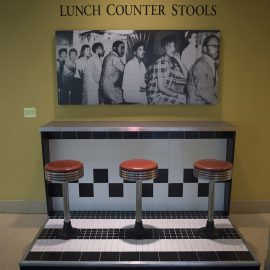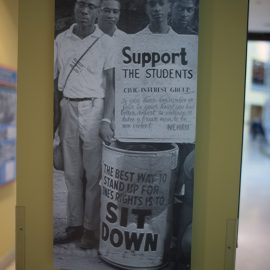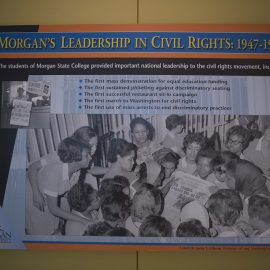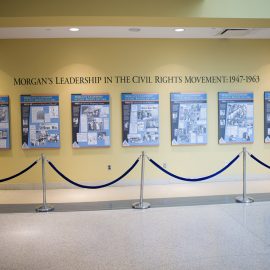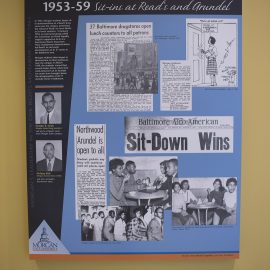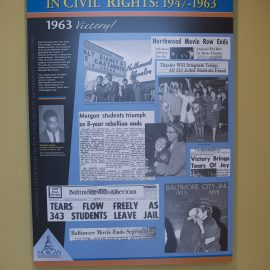News & Community
And Service For All
Sixty years ago, Morgan State College students staged the first successful lunch-counter sit-ins.
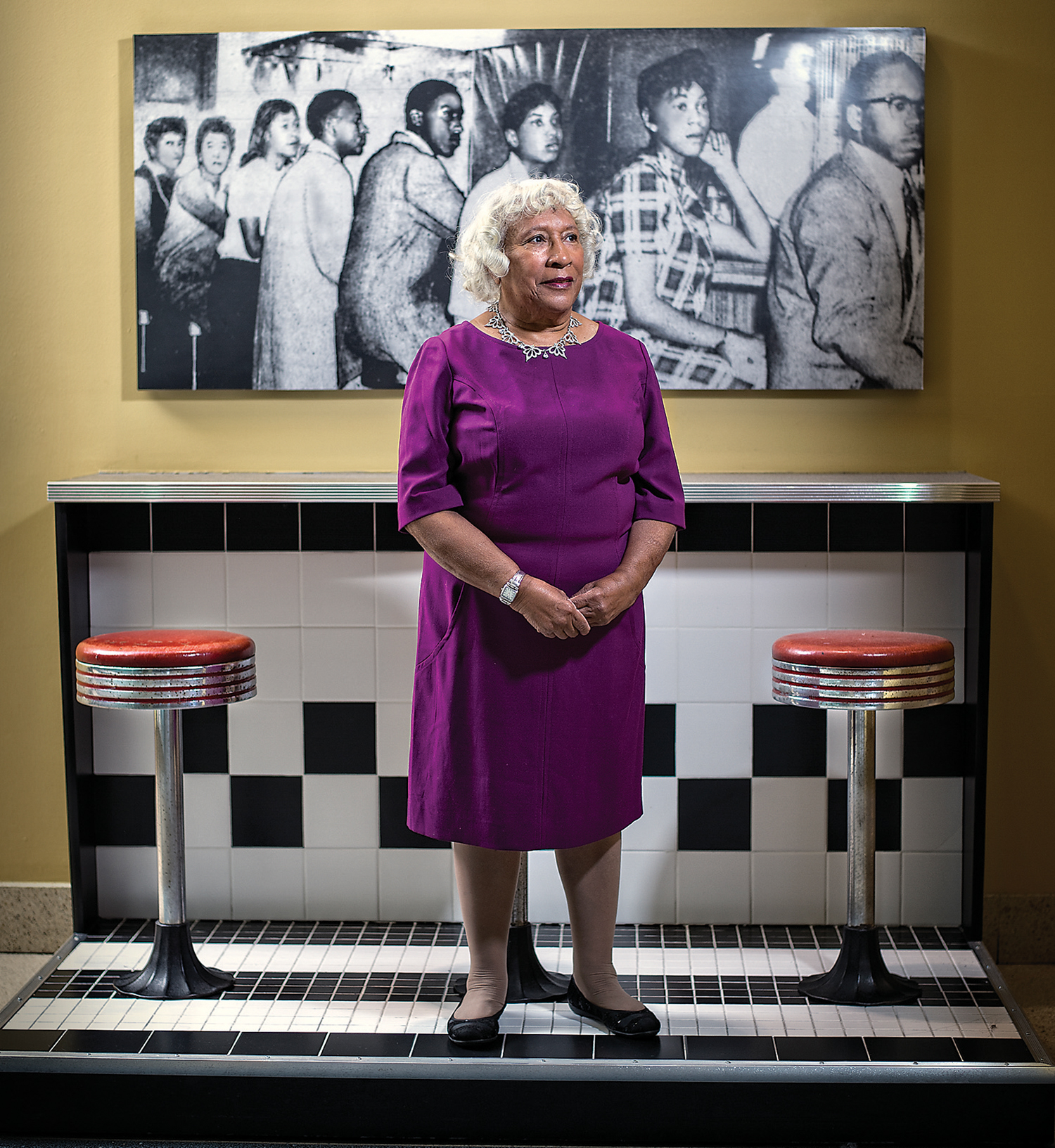
Baltimore wasn't Selma in 1955. It wasn't New York or Philadelphia, either. The sixth largest U.S. city at mid-century, occupying middle ground in a border state that hadn't been able to make up its mind which side to join in the Civil War, Baltimore was its own indecipherable tangle of prejudice.
Biased by laws both written and unwritten, the city could be onerous and discriminating at one turn, accommodating the next. Forget, for a moment, the big stuff, like applying for a job or buying a house. For black citizens, simply trying on clothes or shoes, seeing a movie, filling a prescription, getting a bite to eat—hell, a cup of coffee—meant navigating a labyrinth of rules that shape-shifted not just from neighborhood to neighborhood, but often store to store within a single downtown block.
Yet, unlike in the Deep South, anyone could sit anywhere they pleased on streetcars and buses. And, in theory at least, the city public schools had begun desegregating in the aftermath of the 1954 Brown v. Board of Education decision.
It was in this setting 60 years ago this month that Helena Hicks, then a Morgan State College student, and her friends ducked inside Read's Drugstore in the Lexington and Howard shopping district. "We wanted to sit down, unload our books, and get something hot to drink," she says now. "That's it." January winds had been blowing all morning, strings of buses, too full to stop, kept passing by, and Hicks couldn't stand it any longer. "Let's go inside, all they are going to do is tell us to leave," she recalls saying to her friends. Among the half-dozen students with her, one was from New York, another from North Carolina, and a third from Africa. "They had no idea what the rules were in Baltimore," Hicks says. "If you came from New York, you had fewer rights than you ever had. If you came from North Carolina, you thought you'd made it North. Africa? Forget it."
"In Baltimore, the Read's sit-ins are considered the forerunner to what later happened."
The spunky 80-year-old, who went on to earn a Ph.D. from the University of Maryland, shakes her head of now gray hair at the absurdity of it. "I mean, it didn't make any sense to me either, and I was raised here," she continues, animated as ever. "They figured I knew what I was doing, but I only thought since we had a big group, it might intimidate them, and we could warm up for a while."
As the Morgan students headed toward the lunch counter, the store's black employees ran into the kitchen to avoid association. They were ignored, she says, until a manager arrived on the scene, "informing us that 'niggers' weren't allowed." Hicks, all of 4-foot-11 and 107 pounds, and her classmates held their ground. Not for long, really. "The whole thing lasted maybe 20 minutes," she says. "I wasn't going to let anyone wind up in the Pine Street jail. I'd heard enough about that place by then.
"And, truthfully, we needed to get to school."
A few days later, the front page of the January 22, 1955, national edition of The Afro-American newspaper ran a short story, datelined Baltimore, with the headline "Now serve all." Read's, which had 39 area stores, had suddenly decided to desegregate, with the article citing a "sit-down strike" at its "largest store in the heart of the city, the day before the change of policy was announced." A more in-depth story appeared inside as well, referencing other, coordinated Read's lunch-counter desegregation efforts by Morgan students and the Baltimore chapter of the Committee on Racial Equality (CORE) downtown and at the Northwood Shopping Center Read's near campus. The Baltimore Afro-American published the same day also made several references to the Morgan students' sit-ins and Read's subsequent policy change.
Read's wasn't the first store to desegregate in Baltimore, but it's considered a turning point because it sparked more successful sit-ins in the ensuing years, such as those at Arundel Ice Cream—whose 17 Baltimore-area stores finally desegregated in 1959—and later, the Northwood Theatre, a holdout until 1963. Yet, for more than a half-century, the students' successful desegregation of Read's lunch counters—five years before the more famous Greensboro, NC, lunch-counter sit-ins—had essentially remained lost to history. The Read's story only began to resurface in the late 2000s when plans to demolish the downtown store's former home at Lexington and Howard received public attention. Even now, the story remains somewhat under the radar in terms of its early national civil-rights-era legacy.
"If you live in Baltimore and know your history, the Read's Drugstore sit-ins are considered the forerunner to what later happened, with greater publicity, elsewhere in the South," says Pulitzer Prize-winning Morgan journalism professor E.R. Shipp. "Outside of Baltimore, the Read's Drugstore sit-in and related civil-rights campaigns by Morgan students in the 1950s and 1960s are not widely known," the Georgia native and former editor at The New York Times continues. "I've only been at Morgan about two years. I'm still learning about the students' role in the civil-rights movement myself."
In truth, part of the reason the Morgan students' sit-ins never received the attention of those in the Deep South was that the civil-rights struggle in Baltimore was much more incremental, dating back to the mid-1930s and Thurgood Marshall and Donald Gaines Murray's legal challenge to open the University of Maryland's law school to all races. The other reason the demonstrations never received the national attention of, say, the Montgomery Bus Boycott, was the protests in the city weren't repressed with the same kind of violence—lynchings, church bombings, and attacks with billy clubs and fire hoses—that they were in the Deep South.
In many ways, new protests, led by Hicks and others, to save the currently vacant Read's building from demolition have been as much about saving one of the few remaining symbols of the forgotten, decades-long desegregation battle in Baltimore as they have been about honoring one of the specific sites of the Morgan sit-ins.
"I'd go to class, then to a sit-in, and then come back late at night to study or edit the newspaper."
Baltimore Heritage director Johns Hopkins (distant descendant of the Johns Hopkins) says it was during the late 2000s, when demolition of the Read's building was formally proposed, that the story of Read's began to come to life again. He believes the location of the building and its historic sit-ins are central to understanding the city's complicated record regarding racial prejudice—nowhere more obvious than at Howard and Lexington. The city's beloved department stores—Hochchild's, Stewart's, Hecht's, and Hutzler's ("where Baltimore shops!")—all maintained some form of segregation until 1960 or later.
"When it really hit home for me, what this building and block represent, was when a class of eighth graders and a class of ninth graders came out on separate field trips during demonstrations a few years ago," Hopkins says. "Their reaction was very powerful. You could see what it meant to them to know that story and to be there, where it happened. It's one of the few physical places like that in existence in Baltimore. It's not the Taj Mahal, but landmarks like this draw kids in, and they get interested in learning about that history."
Mayor Stephanie Rawlings-Blake's position on Read's appears to have evolved since initially supporting so-called "Superblock" development plans that would have doomed the building. A spokeswoman, writing in an e-mail, says the mayor is committed to "commemorating the events that occurred at the former Read's Drugstore," but notes that new redevelopment efforts that would at least protect the building's facade remain tied up amid litigation filed by the site's former developers who were contracted by the city.
Morgan State has a long history of civil-rights student activism. In 1947, hundreds of Morgan students marched in Annapolis, demanding equal funding for the school. In 1948, Morgan students were among those successfully picketing, along with the NACCP, for the desegregation of Ford's Theatre in Washington, D.C.
In fact, Hicks's parents had taken her to demonstrations at Ford's long before she stepped foot on campus, and she'd been a member of Lillie Mae Carroll Jackson's NAACP youth group. She says that many Baltimore students at Morgan, originally founded by Methodists, brought their ideals and activist inclinations with them to college, noting that their activism wasn't limited to campus-organized protests. "Most students lived at home, or if they were from out of town, often stayed with a family involved with a church in the city or at the YMCA," Hicks says. "So there'd be demonstrations around school during the school year, but not in the summer or over break. Then, you might do something downtown with the NAACP, or somewhere else, not necessarily as a Morgan student.'"
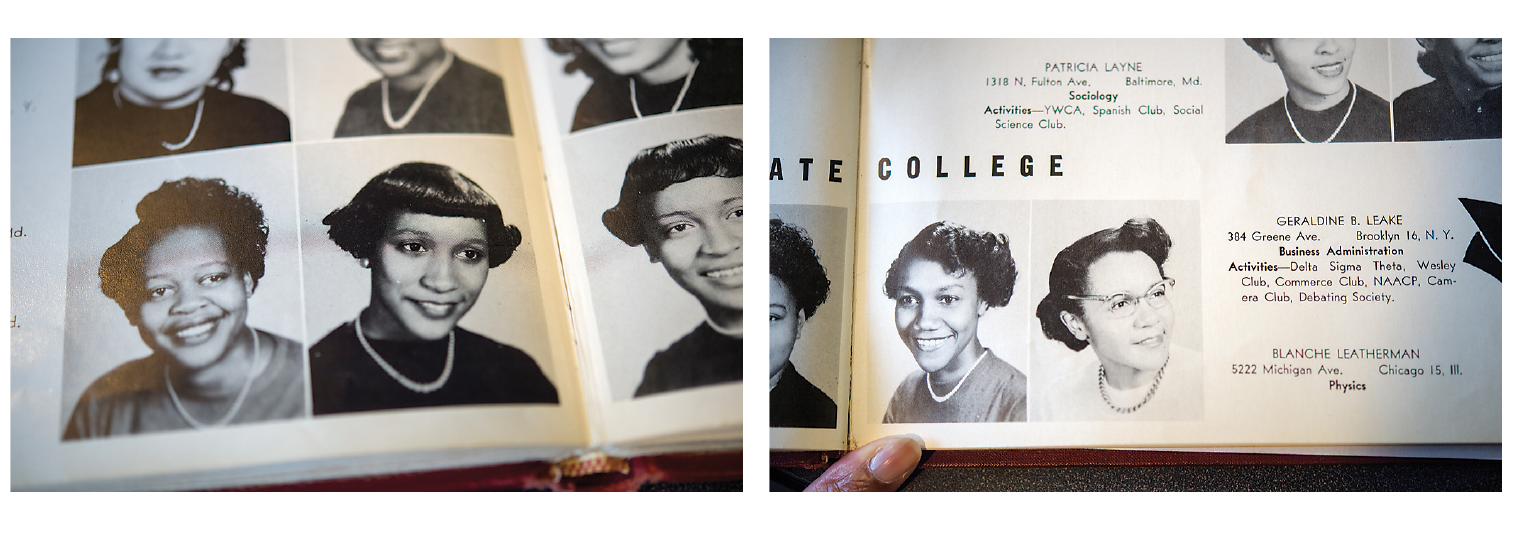
The Reverend Douglas Sands, a Howard County native who attended Morgan from 1952 to 1956 and first met Hicks at college, recalls little interaction with whites going through elementary and high school, except for walking to school. But he had felt the barbs of racism, such as name calling and spitting, before entering Morgan. "I got involved as a freshman in my first protest because a couple of upperclassman came by and pulled me out my dorm—which I was grateful for because it got me away from the pranks people were pulling," says Sands, a former student body president, who participated in the Read's Drugstore sit-ins near campus.
He adds that Morgan students often gathered, formally and informally, at the school's Christian Center, with a subsequent course of action determined by how many students turned up. "The spirit of activism was really woven into the social life on campus," Sands continues. "Truthfully, there wasn't much we could do off-campus."
Former state delegate Walter P. Dean, editor of the school's newspaper in the early 1960s, was one of the first Morgan students arrested in a civil-rights protest on March 26, 1960, at the Hecht-May Co. department store in the Northwood Shopping Center. The management refused to serve black diners and posted guards at the door, according to a later Baltimore Sun story, which added that the arrests had such an impact on other department stores that the owner of Hutzler's ordered its tea room and lunch counters open to all customers a few weeks later.
"Sometimes as students we were fearful, other times we felt emboldened, but it became a crusade for us," says Dean, who was arrested three times at sit-ins as a Morgan student. "It all seemed seamless. I'd go to class, then to a sit-in, and then come back late at night to study or edit the newspaper. We always got our school work done," he laughs, adding that Morgan's administration and faculty was overwhelmingly supportive of the students' efforts.
"Sometimes we were fearful, other times we felt emboldened, but it became a crusade."
By the 1960s, Morgan students were picketing at Northwood Shopping Center's Rooftop Restaurant and participating in large protests at the Northwood Theatre, which continued its segregation policy even as other businesses at the shopping center ended theirs. Ongoing "stand-in" demonstrations at the theater led to a huge number of arrests during the winter of 1963. Then, in late February that year, with 350 Morgan students in jail, the Northwood Theatre owners finally relented.
Several weeks later, Martin Luther King Jr. led his first influential mass demonstrations in Birmingham.
"The fact is," says the 80-year-old Sands, whose memory is little diminished by the passing decades, "that getting involved with something that was proactive was important to me at that age, for many reasons, which I only came to fully understand later."
Joining in protest, in mass resistance, was about more than being able to sit down at a certain lunch counter or inside a certain movie theater, Sands continues. "Those are not the most important things in the world, in and of themselves," he says. "But it was something you could do, bodily, to seek redress for the way you were treated by society. It's how we transcended our experience of racism. It was the means by which we built self-esteem and self-respect for ourselves."
For Hicks, struggle for civil-rights justice simply continues. She notes that most of Baltimore's black cultural landmarks such as the Royal Theatre, which hosted Duke Ellington, Etta James, and The Supremes, among others, and was considered a sister theater to the Apollo in Harlem, have long been torn down in the name of redevelopment. She vows to keep fighting to save Read's building.
"I won't quit," says Hicks, in a voice that still pierces with tenacity, "as long as my eyes are open."
 Online Exclusive! View additional images of Morgan State University’s permanent civil rights era exhibit.
Online Exclusive! View additional images of Morgan State University’s permanent civil rights era exhibit.
